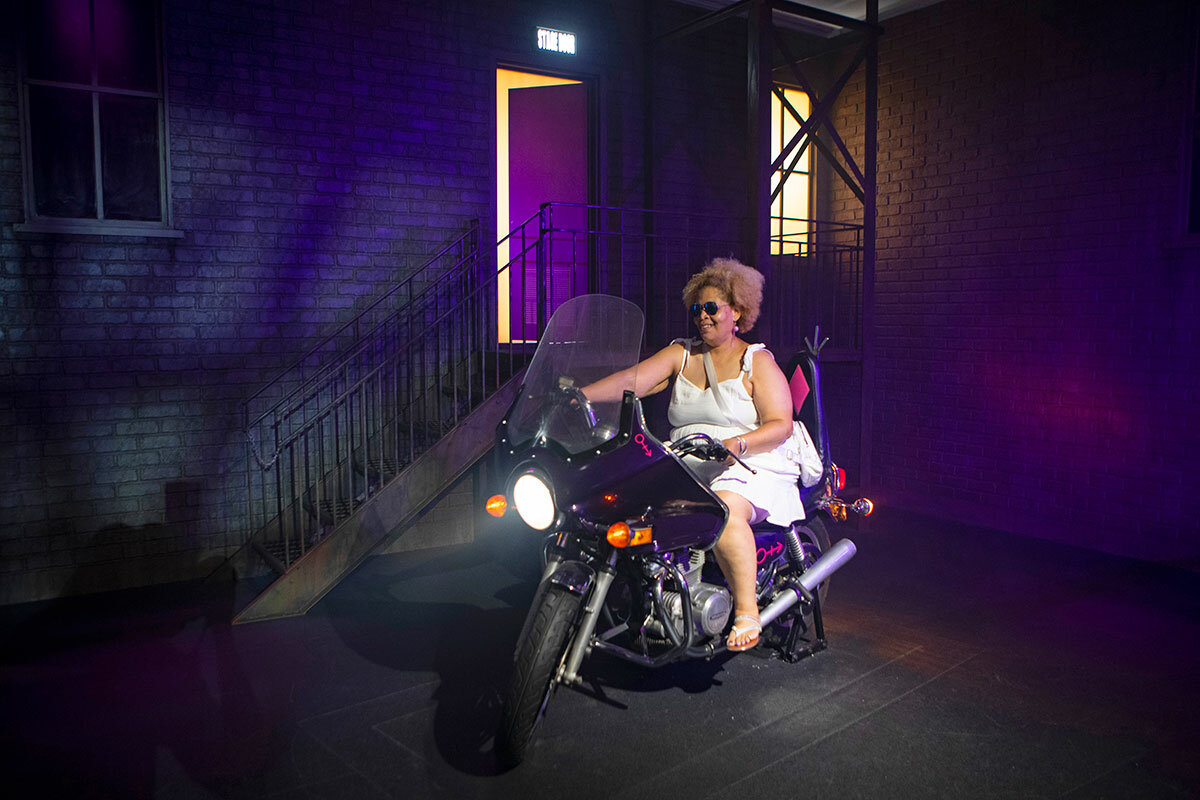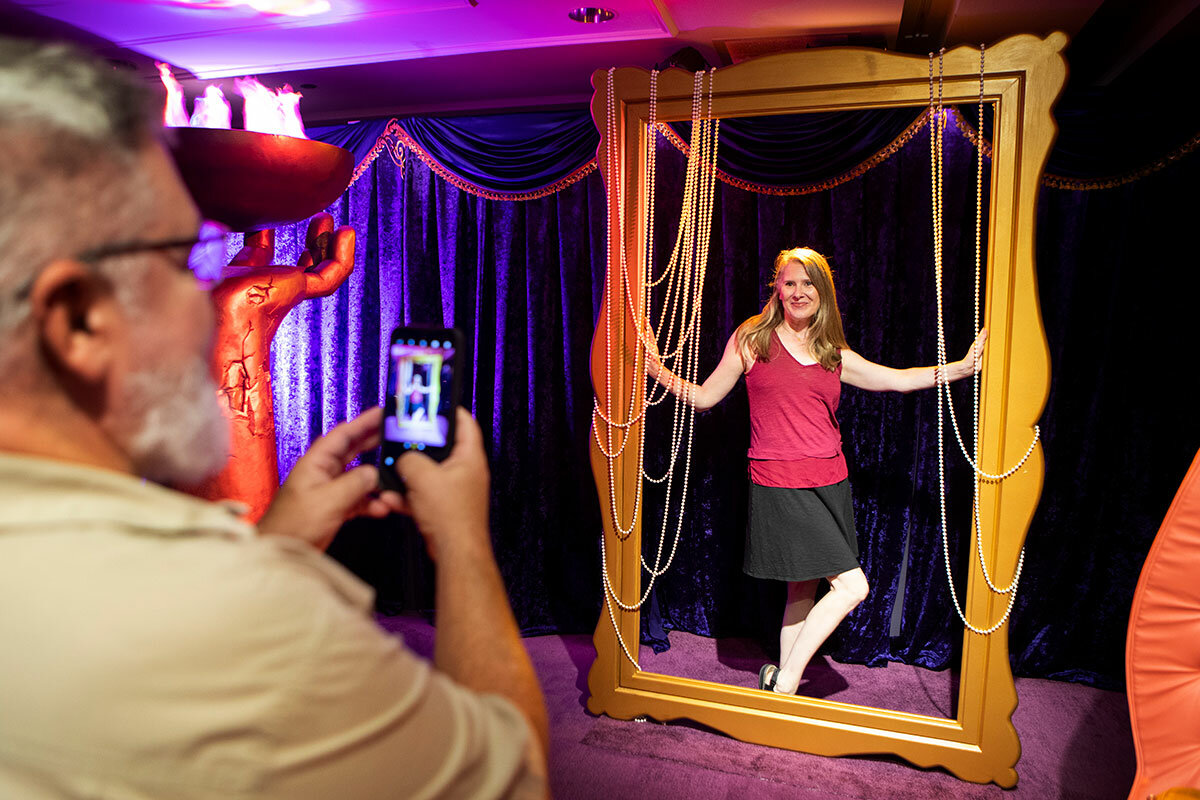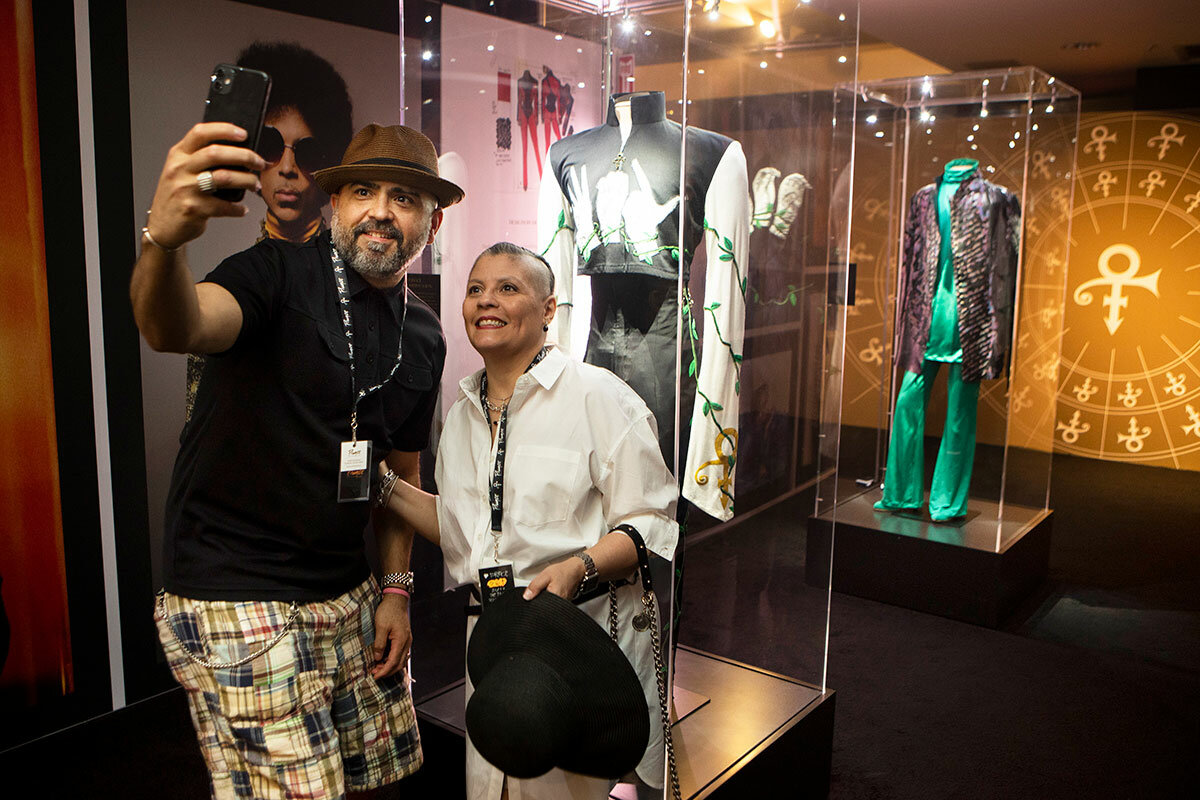Letter from Chicago: At a new exhibit, people find their inner Prince
Loading...
| Chicago
Randy and Amber Scott have just experienced something akin to teleportation.
On a June afternoon in downtown Chicago, they’re visiting a new exhibition, “Prince: The Immersive Experience.” The gleeful couple tell me it’s as if they’d been whisked to Paisley Park, Prince’s private estate in Chanhassen, Minnesota. The exhibition has done an excellent job re-creating the iconic musician’s studio there, Mr. Scott says. He should know. In 1997, he was among radio contest winners treated to a performance by Prince at the place that is now a tourist attraction.
“I miss him,” says Mr. Scott, who cried when Prince died in 2016. “He was a link between me and my father. ... Every year that Prince dropped an album, Dad would take me to the record store.”
The enthusiastic attendees here in Chicago look to be predominantly baby boomers or Gen Xers, like me. As I wander through the galleries, I wonder about Prince’s impact on the world and whether the artist means anything to millennials and Gen Zers. After all, his hit “1999” is about a year many of them are too young to remember. Surveys reveal that younger generations are barely aware of Elvis Presley. If Prince’s work were to similarly fade from cultural memory, does that diminish his legacy?
I ask music business analyst Bob Lefsetz whether exhibitions such as this one help keep an act in the public eye. He counters that they’re aimed at existing fans. “Almost all of this is capitalizing on – I hate to use the word nostalgia that often – but a demand, or an interest, into a different era when music drove the culture,” the author of the Lefsetz Letter tells me. “The icons of today are nowhere near the size of the icons in the past. ... So [visitors] want a hint of what once was.”
“Prince: The Immersive Experience” offers details about the artist’s biography and discography. The exhibition seems tailor-made for Instagram. Visitors snap pictures of a portable keyboard called a keytar that, of course, is purple. Flashes of cellphone cameras glance off glass cases of costumes that are heavy on velvet and ruffles. (Did the man ever secretly just wear jeans and a T-shirt?)
I ask several teenagers, each tagging along with their parents, what they make of the flamboyant icon.
Layla Ayaleanos says Prince isn’t a big deal among her friends at school. But she’s excited to learn more about the musician given that her mom, Mary, named their dog after him. They adopted the pet the day after Prince died.
The only song that high school student Lily Johnson recognizes in the exhibition is “Raspberry Beret.” “I don’t even know that much about Prince, but [the exhibition] was really cool,” she says. “His music seems really sort of, like, outside of the box.”
Richard Gay, chief operating officer of Superfly, the entertainment company behind the show, says that younger visitors love taking selfies inside the lush “Diamonds and Pearls” lounge.
“They may come just because, ‘Hey, I heard about this Prince guy,’” says Mr. Gay, adding that it’s easier than ever for them to do a deep dive into finding out more about the artist. “Back in my day, that meant, ‘Let me go to the record store.’ You know what it means for them? ‘Let me jump on my computer. Let me hear every song he’s ever done. Let me see every video that he’s ever done. Let me watch these movies.’ And they can do that in two nights.”
One aspect of “Prince: The Immersive Experience” that may surprise visitors is information about the artist’s secret philanthropy. By donating millions of dollars to those living in poverty, Prince helped others get through this thing called life.
He could also be unexpected in other ways. I once saw him end a 2011 show in Los Angeles with an encore of “Purple Rain,” only to reappear after the lights went up – on a bicycle. He rode around the arena and then hopped onstage for another three encores.
While touring the exhibition, Sheri Lucas tells her adult son about the time she went to a Prince concert when she was using crutches. “They upgraded my seats to handicapped seats and I was in the first row,” says Ms. Lucas, who poses for a photo with her son on a replica of the motorcycle from the movie “Purple Rain.”
Of the exhibit, she says, “Best time of my life ever. Ever!”
“Prince: The Immersive Experience” helps showcase the range of Prince’s influence – on style, on music, on generosity. Mr. Lefsetz adds another Prince achievement: innovation. But for fans, it’s often the feelings that stick with them most. Millions have danced and sung along to “Kiss,” “Little Red Corvette,” and “Let’s Go Crazy.” Many have wept while listening to “When Doves Cry.”
“Prince, for me, musically can take me through every emotion that I ever want to go through,” says Mr. Scott, the fan who saw a gig at Paisley Park. “He could never be duplicated or replicated.”
“Prince: The Immersive Experience” is in Chicago through Oct. 9.









